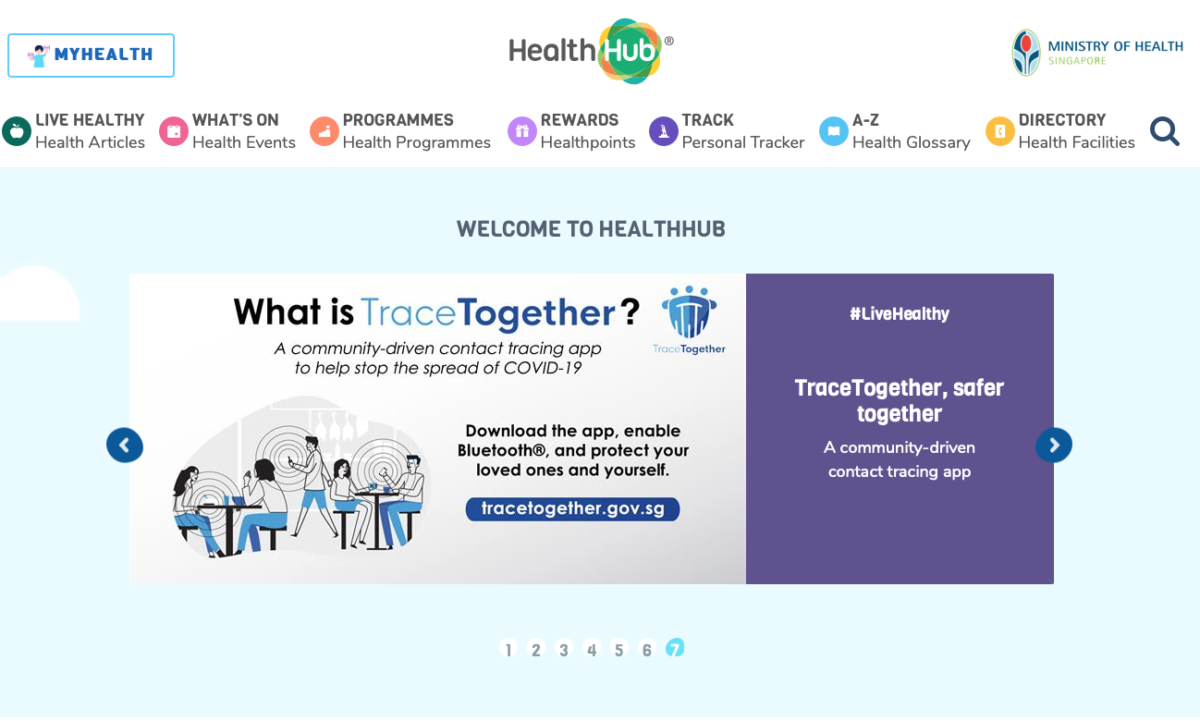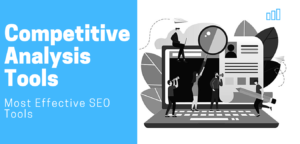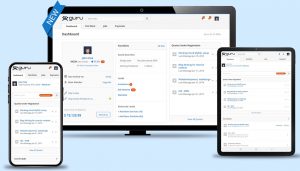
Background
This SEO strategy blog outlines the specific technical recommendations relating to the healthhub.sg organic search optimization campaign.
A number of key issues currently affecting the search engine performance of the site are addressed and solutions are proposed in order of their SEO value or potential impact on ROI.
Website Analysis


Link Analysis

Traffic Analysis

Social Analysis

Keywords Analysis

Detailed Technical Analysis – HealthHub.sg
Based on the above analysis and evaluation of the website, below are the detailed technical overview of the site healthhub.sg.
High Significance Issues
HTTP to HTTPS – 307 Redirect Issue
Found 1,540 pages with 307 temporary redirect.
Although HTTP pages are redirecting (307) to HTTPs, but the redirection method is not SEO friendly.
I would recommend using a 301 redirect in place of 307.
Pages with HTTP Protocol Links
Found 58,429 links with HTTP protocol.
When two web pages are otherwise equal, the search engine prefers HTTPS. We have seen that HTTPS can help with SEO, keep the website secure and AMP requires https.
I would recommend replacing the HTTP with HTTPS links. If we’re using absolute URLs for linking on the website, then update it to the new HTTPS version.
Internal Broken Links (404 Links)
Found 74 internal broken links.
Broken internal links lead users from one website to another and bring them to non-existent webpages. Multiple broken links negatively affect user experience and may worsen search engine rankings because crawlers may think that website is poorly maintained or coded.
I would recommend removing the link leading to the error page or replace it with another working resource.
Internal Broken Images
Found 61 internal broken images.
Broken images may jeopardize your search rankings because they provide a poor user experience and signal to search engines that your page is low quality.
To fix a broken internal image, perform one of the following:
- If an image is no longer located in the same location, change its URL
- If an image was deleted or damaged, replace it with a new one
- If an image is no longer needed, simply remove it from your page’s code
Page Not Found (404 Pages) Issue
Found 72 pages returned with 404 status code.
A 4xx error means that a webpage cannot be accessed. This is usually the result of broken links.
These errors prevent users and search engine robots from accessing your webpages, and can negatively affect both user experience and search engine crawlability.
I would recommend removing all links leading to the error page or replacing it with another resource. If we delete the 404 URLs, set the appropriate 301 redirect and make sure the website has links to live pages only.
Duplicate Meta Description
Found 919 pages with duplicate meta descriptions.
Good meta descriptions are short blurbs that describe accurately the content of the page.
They are like a pitch that convinces the user that the page is exactly what they’re looking for. If all of your pages have similar meta descriptions, they will be more misleading than helpful.
I would recommend writing an engaging explanation of the pages that will make people want to visit our site. Also include the most important targeted keywords in meta description.
Add a Canonical URL to indicate which page search engines should index. Add Noindex to duplicate pages. If you can’t come up with a unique meta description, leaving it blank is a safe bet.
Duplicate Meta Titles
Found 361 pages with duplicate title tags.
Duplicate <title> tags make it difficult for search engines to determine which of a website’s pages is relevant for a specific search query, and which one should be prioritized in search results.
Pages with duplicate titles have a lower chance of ranking well and are at risk of being banned.
Moreover, identical <title> tags confuse users as to which webpage they should follow.
I would recommend having a unique and keyword focused title for each of the site pages.
Add a Canonical URL to indicate which page search engines should index and add Noindex to duplicate pages.
Duplicate Content Issues
Found 181 pages have duplicate content issues.
Webpages are considered duplicates if their content is 85% identical.
Having duplicate content may significantly affect SEO performance. I would recommend the following:
- Add a rel=”canonical” link to one of your duplicate pages to inform search engines which page to show in search results
- Use a 301 redirect from a duplicate page to the original one
- Use a rel=”next” and rel=”prev” link attribute to fix pagination duplicates
- Instruct GoogleBot to handle URL parameters differently using Google Search Console
- Provide some unique content on the webpage
Missing Page Title
Found 5 pages with missing page title.
A <title> tag is a key on-page SEO element. It appears in browsers and search results, and helps both search engines and users understand what your page is about.
I would recommend to ensure that every page on the website has a unique and concise title containing the most important keywords.
Avoid http-equiv <meta> tags
The http-equiv meta tags allow communication to the web browser information equivalent to the ones of HTTP headers.
Two points don’t stimulate the use of http-equiv meta tags:
- Going through the meta requires to interpret the beginning of the HTML page, which is slower than going through the HTTP headers in terms of performance.
- If the HTTP header is already present, the meta is ignored.
If you don’t have access to the configuration of your server (http header) then only use http-equiv meta.
Home page contains 1 http-equiv meta tag – “X-UA-Compatible”. If possible replace it.
Missing Open Graph Image Tag
This page declares some Open Graph properties, however image property is missing.

Help social networks understand information related to the page by using Open Graph properties.
I would recommend to add og:image tag and putting the company logo image in that. <meta property=”og:image” content=”http://image.jpg” />
Site Load Time Issue
With 11 as speed score and FCP 3.1 s, the website’s load time is very poor.
Pages with a longer load time tend to have higher bounce rates and lower average time on page.
I would recommend optimizing the website as instructed by Google PageSpeed Insights.
Missing H1 Heading
Found 103 pages with missing h1 heading.
The header or h1 tag is considered important to help both users and search engines to quickly understand what content they can expect to find on the page. If the h1 is not present, this represents a missing optimization opportunity.
I would recommend providing a concise, relevant and keyword focused h1 heading for each of the web pages.
H1 tag should be at the top of the page content. H1 tag should help readers to understand what the page is about and Every page of the site should have only one h1 tag.
Missing Meta Description
Found 26 pages without meta description.
If the meta description is missing, this represents a missed optimization opportunity. Furthermore, this means that search engines will write the meta description for you, sometimes with pretty disastrous results.
I would recommend to write the descriptive, unique and relevant meta description including the targeted keywords.
Create a compelling meta description that a searcher will want to click. Don’t over use the keywords in the meta description.
External Broken Links
Found 12 external broken links.
External broken links lead users from one website to another and bring them to non-existent webpages. Multiple broken links negatively affect user experience and may worsen your search engine rankings.
I would recommend removing the link leading to the error page or replacing it with another resource.
XML Sitemap Missing
A sitemap.xml file is used to list all URLs available for crawling. It provides easier navigation and better visibility to search engines. It also quickly informs search engines about any new or updated content on the website.
I would recommend generating a sitemap.xml file and specifying the location of the sitemap.xml files in robots.txt file.
Missing Canonical Tag
Found 492 pages without canonical tag.
I would recommend adding rel=”canonical” tag with appropriate URL to target on these pages to fix the duplicate page issue.
Identical or duplicate pages should have the targeted page URL in canonical tag.
Medium Significance Issues
Unminified JavaScript and CSS Files
Found 45,178 issues with unminified JavaScript and CSS files.
Minification is the process of removing unnecessary lines, white space and comments from the source code.
Minifying JavaScript and CSS files makes their size smaller, thereby decreasing page load time, providing a better user experience and improving search engine rankings.
I would recommend Minify JavaScript and CSS files.
Uncompressed JavaScript and CSS Files
Found 4,034 issues with uncompressed JavaScript and CSS files.
This issue is triggered if compression is not enabled in the HTTP response. Compressing JavaScript and CSS files significantly reduces their size as well as the overall size of the webpage, thus improving page load time.
I would recommend enabling compression for JavaScript and CSS files on server.
Low Text-HTML Ratio
Found 3,539 pages with low text-HTML ratio.
Text to HTML ratio indicates the amount of actual text is available on a webpage compared to the amount of code. This issue is triggered when text to HTML is 10% or less. Search engines have begun focusing on pages that contain more content.
That’s why a higher text to HTML ratio means the page has a better chance of getting a good position in search results.
I would recommend reviewing the page’s HTML code and consider optimizing its structure and removing unnecessary embedded scripts and styles.
Also, add more quality content on web pages and make sure you don’t remove necessary codes.
Low Word Count
Found 34 pages with low word count.
This issue is triggered if the number of words on a webpage is less than 200. The amount of text placed on a web page is a quality signal to search engines.
Search engines prefer to provide as much information to users as possible, so pages with longer content tend to be placed higher in search results, as opposed to those with lower word counts.
I would recommend to improve on-page content and be sure to include more than 200 meaningful words.
Missing Alt Tag
Found 3,382 images without an alt tag.
Alt attributes within <img> tags are used by search engines to understand the contents of your images. If you neglect alt attributes, you may miss the chance to get a better placement in search results because alt attributes allow you to rank in image search results.
Not using alt attributes also negatively affects the experience of visually impaired users and those who have disabled images in their browsers.
I would recommend to specify a relevant alt text attribute inside an <img> tag for each image on the website. Do not overstuff keywords in alt text and make sure it describes the photo.
Underscores in the URL
Found 417 pages with underscores in the URL.
Google treats a hyphen as a word separator and underscore as a word joiner. So red_sneakers is the same as redsneakers to Google.
This has been confirmed directly by Google themselves, including the fact that using dashes over underscores will have a (minor) ranking benefit.
I would recommend replacing underscores with hyphens. Redirect the OLD URL having underscore to the new URL with hyphen.
Use a Canonical tag and include the new URL in the canonical tag for both the pages (old/new). Don’t delete the URL with underscore. Instead use the 301 redirection.
Page Titles Below 30 Characters
Found 144 pages with short meta title tag.
Generally, using short meta titles on web pages is a recommended practice. However, keep in mind that meta titles containing 30 characters or less do not provide enough information about what your webpage is about and limit your page’s potential to show up in search results for different keywords.
I would recommend adding more descriptive text inside the page’s meta <title> tag. Use your targeted keywords in the beginning of the title.
Page Titles Over 60 Characters
Found 22 pages with long meta title tag.
Most search engines truncate titles containing more than 60 characters. Incomplete and shortened titles look unappealing to users and won’t entice them to click on your page.
I would recommend rewriting page titles to be 60 characters or less.
Multiple H1 Tags
Found 1034 pages with more than one H1 tag.
Although multiple <h1> tags are allowed in HTML5, SEO experts still do not recommend using more than one <h1> tag per page. Including multiple <h1> tags may confuse users.
I would recommend using multiple <h2>-<h6> tags instead of an <h1>.
Multiple Title Tags
Found 60 pages with multiple title tags.
If there are multiple title tags on the page, it may lead to search engines displaying the ‘wrong’ one, which in turn may lead to lower engagement or CTR from search results, and may also have an SEO impact.
I would recommend determining and using which of the titles is ‘correct’ and remove the other one.
Resources Used as Link
Found 78 resources are formatted as page link.
Some links to resources are formatted with <a href> HTML element. An <a> tag with a href attribute is used to link to other webpages and must only contain a page URL. Search engines will crawl site from page to page by following these HTML page links.
When following a page link that contains a resource, for example, an image, the returned page will not contain anything except an image. This may confuse search engines and will indicate that the site has poor architecture.
I would recommend replacing <a href> links with tags necessary for specific resources. For example, if you’d like to add an image, use an <img> tag with an alt attribute describing the contents of your image.
Online Reputation Management Recommendations
Following are the online reputation management activities, I recommend to perform for any brand:


More details are as following:
Promotion of New and Existing Social Profiles
Increase the popularity of all important social profiles associated with a brand. This will lead us to get the better ranking for those profiles and the bad review links would push a bit in deeper SERP.
Existing Pages:
We have few positive and strong pages ranking in top 20 position for the term “ttsh dental clinic” like:
https://en.wikipedia.org/wiki/Tan_Tock_Seng_Hospital
https://www.facebook.com/TanTockSengHospital/?rf=184050682177143
https://www.healthhub.sg/a-z/medical-and-care-facilities/47/dental-servicess–ttsh
The above 3 pages are already ranking and we can push these for top 5 positions. We can syndicate these pages in high authority social bookmarking sites, can share on social media platforms, can build 3 way backlinks, and can submit these pages in forums.
So, the idea is to promote these pages, so that they can gain better visibility and be able to rank in the top 5 positions.
New Social Profiles:
We should target the term “ttsh dental clinic” by creating new social profiles. And we need to make sure that while creating the new social profiles, our URL, Title, Description, Post and other things are having the term “ttsh dental clinic”. Like for example:
https://www.facebook.com/page/ttsh-dental-clinic/
https://www.twitter.com/ttsh-dental-clinic/
https://sg.linkedin.com/ttsh-dental-clinic/
https://www.pinterest.com/ttsh-dental-clinic/
https://www.instagram.com/ttsh-dental-clinic/
https://www.mix.com/ttsh-dental-clinic/
https://www.medium.com/ttsh-dental-clinic/
etc.
These social sites are having very strong authority and a page on these with the term “ttsh-dental-clinic” will surely rank soon in top search position.
Make sure to regularly update the social profiles and syndicate these social profiles to improve the page authority to beat the bad article pages.
Positive Reviews About the Brand
Create accounts for the term “ttsh dental clinic” on several review sites like Supermedia, Merchant Circle, Google Local, Yahoo Local, and Review Center etc. Some of which would get us brand specific URLs like:
http://www.merchantcircle.com/ttsh-dental-clinic/
https://www.google.com.sg/maps/place/ttsh-dental-clinic/
https://www.crunchbase.com/organization/ttsh-dental-clinic/
https://www.yellowpages.com.sg/company/ttsh-dental-clinic/
https://smartexpat.com/sg/singapore/business/health/dentists/ttsh-dental-clinic/
https://in.enrollbusiness.com/BusinessProfile/3536735/ttsh-dental-clinic/
https://www.angloinfo.com/singapore/directory/listing/ttsh-dental-clinic/
The common thing in the above profiles is that they have ttsh-dental-clinic in the URL and we need to have the term “ttsh dental clinic” in the title, description, page content etc. These business profiles will start popping up in Google search results and will replace the negative articles.
Doing this will also provide more information about the brand locally. Hence users may have a better idea of the service they are looking for & this clarity will help them make up their minds to buy the service, hence boosting sales.
External Blogs Creation and Marketing
Explore various external blog networks to increase popularity as well brand presence on the web. We should have external blogs on Blogspot, WordPress, Livejournal, Blog.com, Tumblr, Weebly etc.
Q & A Submissions
Questions and Answers are a new way to find and share information. We can ask questions on a few specific topics on popular Q&A sites like Quara, Yahoo Answers and can get answers from real people, and share their insights and experience along with procuring links for brand websites.
Video Submissions
We can create accounts for a brand on several video sites and can post videos on those sites. e.g:
Youtube, Daily Motion, Google Videos etc.
Guest Blogging
It will help in getting quality traffic and backlinks, improving website authority, increase brand awareness etc.
Forum Posting
It helps in generating quality backlinks, targeted traffic, knowledge sharing and expansion.
Micro Blogging
It helps in building brand awareness, growing your business network, giving your client base important announcements, giving and getting feedback from users and quickly syndicating your content.
Social Bookmarking
We can create accounts for a brand on several bookmarking websites and can improve our site’s visibility. For example:
Digg: http://www.digg.com/ttsh-dental-clinic
Delicious: http://delicious.com/ttsh-dental-clinic
Clipmarks: http://clipmarks.com/clipper/ttsh-dental-clinic
Blinklist: http://www.blinklist.com/ttsh-dental-clinic
etc.
We can post our top pages in these social bookmarking sites by tagging our niche keywords. This would help us in several ways like procuring one way links, getting loads of relevant traffic due to tagging, content sharing, branding & viral marketing.
Press Release Distribution
Both Google and Bing have suggested that positive brand mentions may play a role in how they rank your site, meaning positive PR coverage can aid your SEO efforts even without a link. And we can promote popular PR’s for the ORM purpose.
Content Networks (Hubpages)
Since Hubpages allows you to include links when writing and publishing a hub, you can include links to external websites such as yours but there is a limit to it. For such links to be dofollow, ie. rankable by search engines, you need to have a high Hubber score(around 75+) and this is practically easy if you write a good number of hubs with high traffic. A strong Hub profile rank well on SERP’s, hence will help in ORM.
Social Media
Even though social media is not a ranking factor on a superficial level, it has significance if you look deeper. Indirectly, it does have a positive effect on a page’s ranking. So yes, there is a definite correlation between a site’s position in the SERPs and the number of social signals it has.
Local Directory Listing
Local business listings and citations play a vital role in reputation, rankings, and revenue. But we need to make sure that we only use top 10 web directories including yellow pages, craigslist etc.
All the above activities will create business profiles and these profiles are going to rank well in SERPs for a brand and will create positive brand awareness.
Conclusion
After the analysis of the site, I would recommend to implement the above suggested changes on the website for better search results. Also improve the SEO offpage and Social Media efforts to increase the domain authority.
For a detailed technical analysis of your website, feel free to contact me.
Dharam
Latest posts by Dharam (see all)
- What could be the reasons of High Advertising Cost of Sales (ACoS)? - January 13, 2025
- How to provide Walmart Connect user access to someone? - January 13, 2025
- Top Strategies to Lower TACOS and Improve Advertising ROI - April 1, 2024
- Walmart Advertising – Interview Questions - February 9, 2024
- Brand Term Targeting (BTT) Best Practices - February 6, 2024














